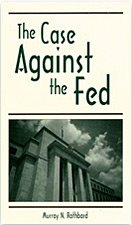Antal Fekete: Troubled Asset Relief Program
TROUBLED ASSET RELIEF PROGRAM (TARP)
By Antal Fekete
Oct 10 2008 5:02PM
www.professorfekete.com
As the precipitous drop of the Dow Jones index of industrial stocks to the 8600 level on Thursday shows, the $700 billion bailout is an exercise in futility. The rescue effort administers one wrong medicine after another. Shunting rotten assets to the balance sheet of the central bank is not the way to go. Consolidating banks through forced mergers is not the way to go. Cutting interest rates is not the way to go. These measures make the problem worse, not better.
All the remedies to check the burgeoning credit crisis that have been proposed or put into effect are based on misdiagnosis. This is not a sub-prime crisis or a real estate crisis. It was not caused by loose lending standards, or by the banks recklessly and aggressively increasing their assets.
This crisis was caused by shriveling capital ratios due to the destruction of bank capital through 28 years of falling interest rates. As I have been saying again and again, falling interest rates destroy capital by increasing the liquidation value of debt ― an insidious process that has been missed by all other observers. Ignoring capital dissipation is possible only so long as capital lasts. As soon as capital is exhausted, dissipation stops. There is nothing left to dissipate. The problem at once becomes painfully noticeable.
The term ‘liquidation value of debt’ is self-explanatory, meaning the lump sum that will liquidate it before maturity, should it be necessary in case of a takeover, merger, shot-gun marriage, bankruptcy, or outright nationalization of the banking system. The point is that when the rate of interest falls, the liquidation value of debt rises. Why? Because the stream of interest payments is now discounted at a lower rate of interest. Therefore at maturity it will fall short of liquidating the debt.
Here is a familiar example. When the rate of interest falls, the market immediately bids up the price of bonds. This is the same to say that the liquidation value of the debt underlying the bond is raised. Debtors wanting to liquidate their bonded debt before maturity are not let off the hook on the same terms. The market demands more than the pound of flesh originally agreed upon for releasing the debtor from his bond. This example clearly shows that a fall in the rate of interest, far from alleviating the burden of debt, aggravates it.
Bank capital is debt, and it has been eaten away by persistently falling interest rates. Impairment of capital has been ignored and, after 28 years of negligence, the global banking system now stands denuded of capital. Those shareholders who can read balance sheets see through the fancy values banks are putting on their assets, and they dump the stock before bank capital goes all the way to zero.
The only way this crisis can be resolved is through recapitalizing the banks with gold. Contrary to Keynesian propaganda, gold is not a barbarous relic. It is not for decoration purposes. Nor does gold serve for the purpose of window-dressing in the balance sheet. Gold is unique among financial assets in that it has no counterpart as a liability in the balance sheet of others. It follows that gold, and gold alone, will survive any consolidation of bank balance sheets. Gold will not be netted out like paper assets are in case of mergers, acquisitions, and takeovers, or the nationalization of the banking system.
The fatal weakness of the present rescue effort is precisely this: consolidation of banks, just as consolidation of the derivatives monster, far from stopping the rot, will accelerate it. For example, if you consolidate the derivatives monster, claims and counter-claims through credit-default swaps will cancel out, and all risks will be exposed as being uncovered. Recapitalization with more fiat money will not work. It takes something more solid than irredeemable promises to pay. It takes gold.
Unfortunately our political leaders and policy-makers are lacking the moral fortitude to admit that they have been wrong all along about gold and its role in the financial system. Nor do they have the wisdom to realize that in cleaning up the train wreckage they have to go back all the way to the point where the train was derailed: to the insane decision to discard gold from the monetary system in 1971. Politicians and their academic sycophants will stick to their pet-rock, TARP, the Troubled Ass Relief Program (if you pardon my pun of cutting off the tail of the word ‘asset’). This is their cover-up of the fact that the credit-crisis is their own making.
The first of the Twin Towers, the Derivatives Tower of Babel, has now toppled, although you cannot see it yet as the dust is still settling. The toppling of the second, the Debt Tower of Babel, will follow in due course ― unless banks are recapitalized with gold with all deliberate speed.
The collapse of the Debt Tower of Babel would spell a disaster of the first magnitude, adversely affecting everybody. It would trigger the Great Grand Depression of the twenty-first century, making the Great Depression of the twentieth look mild in comparison.
***
This and other articles of the author can be accessed at the website www.professorfekete.com
Preliminary announcement: Gold Standard University Live is planning to have its Session Five in Canberra, Australia, in November, 2008. This Session will include a Primer on the gold and silver basis, prerequisite for a Workshop on the basis offered at Session Six (planned to take place in the Spring, 2009
Labels: Antal Fekete, financial crisis, gold















![[Most Recent Quotes from www.kitco.com] [Most Recent Quotes from www.kitco.com]](http://www.kitco.com/images/live/t24_au_en_usoz_6.gif)
![[Most Recent Quotes from www.kitco.com] [Most Recent Quotes from www.kitco.com]](http://www.kitco.com/images/live/au_go_0030_ny.gif)
![[Most Recent Quotes from www.kitco.com] [Most Recent Quotes from www.kitco.com]](http://www.kitco.com/images/live/au_go_0365_ny.gif)
![[Most Recent Quotes from www.kitco.com] [Most Recent Quotes from www.kitco.com]](http://kitconet.com/charts/metals/silver/t24_ag_en_usoz_4.gif)

















0 ΣΧΟΛΙΑ (COMMENTS):
Post a Comment
<< Home